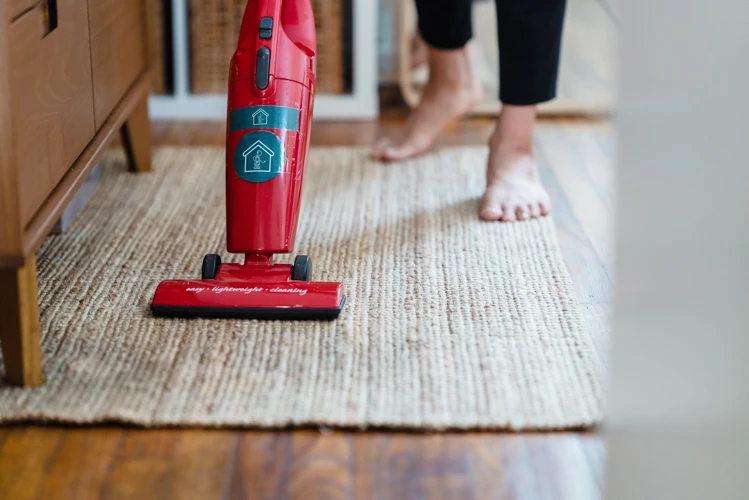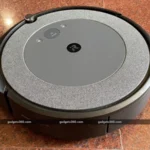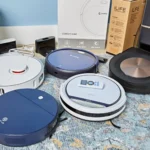Have you ever been confused about whether to choose a bagged or bagless automatic dirt disposal system? Are you wondering which one is best for your needs and preferences? With so many options available, it’s easy to feel overwhelmed. However, fear not, as we’re here to help! In this article, we’ll explore the benefits and drawbacks of both bagged and bagless models, and compare them based on various criteria. By the end of it, you’ll have a better understanding of which one to choose for your home. So, let’s dive in!
Bagged Automatic Dirt Disposal Systems

Using the latest technology, cleaning has now been made easier and more convenient with Bagged Automatic Dirt Disposal Systems. Cleaning can be a difficult task, which is why people opt for these systems that offer a less tedious way of getting the job done. These advanced systems make use of amazing technology to rid your home of dust and debris with minimal effort. Let’s dive in and learn more about these systems, including how they work, their advantages, and their disadvantages. If you’re interested in learning about other innovative vacuum technologies such as smart navigation, acceptable noise levels, WiFi connectivity, optimal square feet, and how much suction power is too much, check out the links to our other helpful articles here, here, here, here, and here.
How do they Work?
Bagged automatic dirt disposal systems work by using a bag to collect dirt and debris. Basically, dirt is sucked in through the vacuum, travels through a hose and into the bag. The bag is usually made of a thick cloth material and its purpose is to trap dust and allergens that might be harmful to you and your family. Here are the detailed steps on how bagged automatic dirt disposal systems work:
- The vacuum cleaner: It is the main component of a bagged automatic dirt disposal system. It sucks in dirt and debris from the floor and carpet.
- The hose: It is a flexible tube that is attached to the vacuum cleaner. It sucks up and transports the dirt from the floor and carpet into the bag.
- The bag: It is the container that collects the dirt and debris. The bag is usually made of a thick cloth material that traps dust and allergens.
- The motor: It powers the vacuum cleaner and creates the suction that pulls in the dirt and debris.
- The filter: It is a component designed to prevent the dust and allergens from escaping and spreading into the air.
Bagged automatic dirt disposal systems are a common choice for many homeowners due to their simplicity and effectiveness in trapping dirt and allergens. However, they also come with some disadvantages such as the need to replace the bag regularly and the extra cost of purchasing new bags. Despite these drawbacks, they are still a popular choice in the market.
Advantages of Bagged Systems
Bagged automatic dirt disposal systems have been around for quite some time and still continue to be a popular choice among homeowners. Here are some advantages of using a bagged system:
| Advantages of Bagged Systems |
|---|
| Improved Air Quality: Bagged systems are designed to trap dust and allergens inside the bag, preventing them from escaping into the air. This means that bagged systems are an excellent option for those who suffer from allergies or respiratory problems. |
| Easy Disposal: Bagged systems are very easy to dispose of. All you need to do is remove the full bag and toss it in the garbage. |
| Lower Maintenance: Bagged systems require less maintenance as the bags themselves act as filters, which means that you will not need to regularly clean or replace filters like you might with a bagless system. |
| Less Mess: Since the dust and debris are captured inside the bag, bagged systems tend to create less dust and mess during disposal than bagless systems, making them a more hygienic option. |
Bagged automatic dirt disposal systems are a reliable and efficient option, making them a great investment for those looking for a hassle-free cleaning experience.
Disadvantages of Bagged Systems
While bagged automatic dirt disposal systems have their advantages, they also come with some disadvantages that should be taken into consideration. Here are some of the drawbacks of bagged systems:
- Cost of bags: One of the biggest disadvantages of bagged systems is the ongoing cost of buying replacement bags. Depending on the make and model, these bags can be quite expensive and need to be replaced regularly. Over time, this cost can add up and may make bagless systems a more cost-effective option.
- Reduced suction power: As the bag fills up with debris, the suction power of the vacuum may decrease. This means the system may not be as effective at picking up dirt and dust until the bag is replaced.
- Environmental impact: With each bag replacement, there is the added waste of throwing away used bags. While some bags may be biodegradable, others are not, and this can have a negative impact on the environment.
- Limited capacity: The size of the bag determines how much dirt and debris it can hold. As a result, frequent bag changes may be required, which can be a hassle for some users.
It’s important to weigh these disadvantages against the advantages of bagged systems when making a decision about which type of automatic dirt disposal system is right for you. Additionally, some may find these disadvantages to be minor inconveniences, while others may feel they are deal-breakers. Ultimately, the decision comes down to personal preferences and needs.
Bagless Automatic Dirt Disposal Systems

Are you tired of constantly replacing vacuum bags? Bagless automatic dirt disposal systems may offer a solution. These innovative systems utilize advanced technology to collect and dispose of dirt and debris without the need for bags. By avoiding the hassle of bag replacement, bagless systems have become increasingly popular among homeowners. In this section of the article, we will discuss how these systems work, their advantages and disadvantages, and how they compare to their bagged counterparts. So, let’s dive in and explore the world of bagless automatic dirt disposal systems!
How do they Work?
Automatic dirt disposal systems are becoming increasingly popular among homeowners. Bagged and bagless systems are the two most common types of automatic dirt disposal systems. Both systems work to remove dirt and debris from your home, but their mechanisms differ.
Bagged Automatic Dirt Disposal Systems:
– Bagged automatic dirt disposal systems use a dustbin and a disposable dust bag to collect and hold dirt and debris.
– The dustbin is installed directly under your robot vacuum or connected to it via a docking unit.
– Once the robot vacuum has finished cleaning, it returns to the docking station where the dustbin is emptied into the disposable dust bag.
– A new dust bag can then be installed, ready for use the next time your robot vacuum cleans your home.
– The bagged system is designed to capture and seal dust and debris, ensuring that it stays contained.
Bagless Automatic Dirt Disposal Systems:
– Bagless automatic dirt disposal systems use a similar mechanism to bagged systems, but they don’t require a disposable dust bag.
– They use a dustbin that is installed directly under the robot vacuum or connected to it via a docking station.
– Once the robot vacuum finishes cleaning, it returns to the docking station where the dustbin is emptied directly into a trash can or another waste disposal system.
– The bagless system uses filters to trap dust and debris, ensuring that it doesn’t escape into the air.
Both bagged and bagless automatic dirt disposal systems are effective in getting rid of dust and debris. However, they differ in their mechanisms for containing and disposing of dirt. Understanding the workings of each system can help you make a more informed decision when choosing the right automatic dirt disposal system for your home.
Advantages of Bagless Systems
Bagless automatic dirt disposal systems have several advantages over their bagged counterparts, which make them a popular choice among customers. Below are some of the advantages of using bagless automatic dirt disposal systems:
| Advantages | Description |
|---|---|
| Easy to use | One advantage of bagless systems is that they are easy to use. Instead of removing and replacing bags after they are full, you simply empty the dust cup and put it back in place. |
| Cost-effective | Bagless systems are more cost-effective in the long run. You don’t need to continually purchase replacement bags, which can add up over time. This makes them an economical option for homeowners. |
| Better for the environment | Bagless systems are environmentally friendly. There are no bags to throw away, reducing waste and helping to keep our planet clean. |
| Better suction power | Bagless systems often have better suction power than bagged systems. This is because the dust cup is designed to maintain strong suction throughout its life, without becoming clogged by dust particles. |
| Easier to tell when full | With bagless systems, it’s easier to tell when the dust cup is full and needs to be emptied. Many models have clear dust cups, allowing you to see how much dirt and dust has been collected. |
Bagless automatic dirt disposal systems offer several advantages over bagged systems, including being easy to use, cost-effective, better for the environment, having better suction power, and being easier to tell when the dust cup is full. However, there are also some disadvantages to using bagless systems, which will be discussed in the next section.
Disadvantages of Bagless Systems
When it comes to bagless automatic dirt disposal systems, there are a few disadvantages that you should be aware of before making a purchase. These include:
- Dust expulsion: Unlike bagged systems, bagless systems often have a tendency to expel dust and debris during the emptying process. This can be a major issue for individuals who suffer from allergies or respiratory problems.
- Inconvenient cleaning: While bagless systems eliminate the need for purchasing and replacing bags, they require frequent cleaning of the dustbin and filter to prevent clogs and maintain proper airflow. This can be time-consuming and messy, especially for those who don’t enjoy cleaning tasks.
- Decreased suction power: As the dustbin fills up, suction power may decrease, which can make it harder to pick up dirt and debris effectively. This means that bagless systems may require more frequent cleaning to maintain optimal performance.
- Higher initial cost: In general, bagless systems tend to be more expensive upfront when compared to bagged systems. This cost may be offset by the absence of additional bag purchases, but it’s worth considering if you’re working with a tight budget.
It’s important to weigh these disadvantages against the advantages of bagless systems to determine which option would be best suited for your needs. If you’re willing to put in the extra effort for cleaning and maintenance, a bagless system may be a good fit. However, if you prioritize convenience and minimal cleaning, a bagged system may be the better choice.
Comparison Between Bagged and Bagless Automatic Dirt Disposal Systems
Now that we have discussed the pros and cons of both bagged and bagless automatic dirt disposal systems separately, it’s time to compare them side by side. This will help you decide which type of system is better suited for your needs. Let’s delve into the comparison between the bagged and bagless automatic dirt disposal systems based on key factors such as dust handling, convenience, cost, and maintenance.
Dust Handling
When it comes to dust handling, both bagged and bagless automatic dirt disposal systems have their pros and cons. Let’s take a closer look at the differences:
| Bagged Systems | Bagless Systems | |
|---|---|---|
| How do they handle dust? | Bagged systems use replaceable bags to hold the dirt and dust. The bag keeps the dust contained, making it easier to dispose of without spreading debris back into the air. | Bagless systems use a dustbin, which collects dirt and dust directly from the vacuum cleaner. Some models have a filter to capture dust particles before they reach the dustbin. |
| What are the advantages? | Bagged systems are great for people with allergies or respiratory problems because they keep dust and allergens contained. They are also more convenient to replace than emptying a dustbin by shaking or scraping out accumulated debris. | Bagless systems are more eco-friendly since they don’t require disposable bags or generate additional waste. Additionally, they offer greater suction power and can hold more dirt before needing to be emptied. |
| What are the disadvantages? | Replacing bags can be an additional cost over time, and can be a bit of a hassle to switch out. Additionally, if the bag is overfilled or not changed frequently enough, it can lead to reduced suction power or potentially damage the vacuum cleaner. | While bagless systems do not generate as much waste as their bagged counterparts, they can release more dust back into the air when emptying the dustbin. This can be a problem for people with allergies or respiratory issues. |
When it comes to dust handling, the choice between bagged and bagless systems largely depends on personal preferences and needs. If you prioritize dust containment for health reasons, then bagged systems are likely the better option for you. However, if eco-friendliness and convenience are more important, then bagless systems may be the way to go.
Convenience
When it comes to convenience, both bagged and bagless automatic dirt disposal systems have their own strengths and weaknesses. However, there are some notable differences worth considering.
One major advantage of bagless systems is that they are, as the name suggests, bagless. That means you don’t have to purchase or replace bags, which can save you money in the long run. Instead, they use a dustbin or container which you can simply empty into the trash.
On the other hand, bagged systems can be more convenient in terms of cleanliness. The bag itself acts as a filter and contains all the dirt and dust, making it easier to dispose of without creating a mess. Additionally, some bagged systems have a self-sealing mechanism that prevents dust from escaping and spreading around your home when the bag is removed.
To further compare the two systems, let’s take a look at a table outlining their differences in terms of convenience:
| Bagged Systems | Bagless Systems | |
|---|---|---|
| Cost of Bags | Must be purchased and replaced regularly, adding extra expense | No bags needed, saving money in the long run |
| Cleanliness | Bag acts as a filter, containing all dirt and dust for easier disposal | Dirtbin/container needs to be emptied into the trash, which can create some mess |
| Self-Sealing Mechanism | Some models have self-sealing bags that prevent dust from escaping | Not applicable |
Ultimately, the choice between bagged and bagless systems comes down to personal preference when considering convenience. If you don’t mind the cost of bags and prefer a cleaner way of disposing of dust, a bagged system may be the way to go. However, if you want to save money and don’t mind emptying a dirtbin, a bagless system might be more convenient for you.
Cost
When it comes to choosing between bagged and bagless automatic dirt disposal systems, the cost is a crucial factor that cannot be ignored. Both types of systems have different costs associated with them, and it is essential to understand them before making a final decision.
Bagged Automatic Dirt Disposal Systems Cost
The upfront cost of bagged automatic dirt disposal systems is generally higher compared to bagless systems. These systems require the purchase of bags regularly, which adds to the overall cost. The frequency at which bags need to be changed depends on the usage and the size of the unit. The cost of bags can add up over time and ends up being a recurring expense. However, some people prefer bagged systems because they are considered more hygienic and create less dust and mess when changing bags.
Bagless Automatic Dirt Disposal Systems Cost
Bagless automatic dirt disposal systems usually have a lower upfront cost compared to bagged systems since they do not require bags. The absence of bags means that there is no additional cost for purchasing bags regularly. However, it is essential to note that bagless systems require regular maintenance, which can add to the overall cost. These systems have filters that need to be changed or cleaned regularly to maintain their effectiveness.
Comparison Table
To help you better understand the cost comparison between bagged and bagless automatic dirt disposal systems, we have created a comparison table. This table outlines the initial cost, recurring cost, and maintenance cost associated with both types of systems.
| Initial Cost | Recurring Cost | Maintenance Cost | |
|---|---|---|---|
| Bagged Systems | Higher | Cost of bags | Less maintenance required |
| Bagless Systems | Lower | No cost for bags | Filters need to be changed or cleaned regularly |
As the above comparison table illustrates, the choice between bagged and bagless automatic dirt disposal systems ultimately depends on personal preference and budget. Bagged systems may have a higher upfront cost, but they have a lower recurring cost and require less maintenance. Bagless systems, on the other hand, have a lower upfront cost, but they require regular maintenance and have a higher recurring cost for filter replacements.
Maintenance
Maintaining an automatic dirt disposal system is crucial to ensure its longevity and efficient operation. Both bagged and bagless systems require maintenance, but the type and frequency of maintenance may differ.
Bagged Systems: Maintaining a bagged automatic dirt disposal system involves replacing the bag periodically. The frequency of bag replacement depends on various factors such as the frequency of use and the capacity of the bag. The bag must be disposed of and replaced with a new one once it is full. It is recommended to change the bag every 1-3 months, depending on usage. Additionally, it is advised to clean the filter periodically to prevent clogging.
Bagless Systems: Bagless automatic dirt disposal systems require less maintenance than bagged systems because there are no bags to replace. However, the collection canister must be emptied frequently. The frequency of canister emptying depends on various factors such as frequency of use and capacity of the canister. It is recommended to empty the canister every 2-3 weeks, depending on usage. The filter must be cleaned regularly to maintain optimal performance.
| Type of System | Maintenance Required |
|---|---|
| Bagged System | Replace bag every 1-3 months Clean filter periodically |
| Bagless System | Empty canister every 2-3 weeks Clean filter regularly |
Regardless of the type of automatic dirt disposal system chosen, regular maintenance is crucial to keep the system running efficiently. Neglecting maintenance can lead to reduced suction power, decreased airflow, and increased strain on the motor. Ultimately, this can result in the need for costly repairs or replacement. It is essential to follow the manufacturer’s recommended maintenance schedule to keep the system in top condition.
Conclusion
After weighing the advantages and disadvantages of both types of automatic dirt disposal systems, it ultimately comes down to personal preference and specific cleaning needs.
Bagged systems are ideal for those who are sensitive to allergens and want to ensure that their environment remains as clean as possible. However, they require frequent bag changes and can be more expensive in the long run.
Bagless systems, on the other hand, offer greater convenience and cost savings, but are not as effective at containing dust and can cause more mess during the emptying process.
When it comes to dust handling, bagged systems are the clear winner as they minimize the release of dirt and debris into the air. However, bagless systems have improved their filtration technology and are not far behind.
In terms of convenience, bagless systems win out as they eliminate the need for bag changes and can hold more dust and debris before needing to be emptied.
Cost is another important factor to consider. Initial costs for bagged systems may be lower, but the ongoing expenses of purchasing replacement bags can add up over time. Bagless systems may be more expensive upfront, but they typically require less maintenance and can save money in the long run.
Finally, maintenance is an important consideration. Bagged systems require frequent bag changes and may need to be cleaned more often. Bagless systems may require filter changes or cleaning of the dustbin, but are generally low maintenance.
Overall, choosing between a bagged or bagless automatic dirt disposal system depends on a variety of factors, including personal preference, cleaning needs, and budget. It’s important to weigh the pros and cons of each option before making a decision.
Frequently Asked Questions
Are bagged systems more effective than bagless systems?
Both bagged and bagless systems are effective in their own ways; it ultimately depends on your personal preference.
Do bagless systems require more maintenance?
They may require more frequent cleaning, but overall maintenance should be similar between the two types of systems.
Can I use any type of bag with bagged systems?
No, it is important to use the specific bags recommended by the manufacturer to ensure proper functioning.
Do bagless systems have better suction than bagged systems?
Not necessarily, as suction power is dependent on the specific model of the automatic dirt disposal system.
Are bagless systems more eco-friendly than bagged systems?
Bagless systems may be considered more eco-friendly as they do not require disposable bags. However, bagged systems can also be eco-friendly if non-disposable bags are used.
Can I switch from a bagged system to a bagless system?
Yes, it is possible to switch from one type of system to the other, but you will need to purchase a new automatic dirt disposal system.
Can I recycle the bags used in bagged systems?
It depends on the specific materials of the bags; check with your local recycling center for their policies on bag recycling.
Which type of system is quieter?
It depends on the specific model of the system rather than the type of system.
Do bagless systems have a larger capacity than bagged systems?
Not necessarily, as capacity is also dependent on the specific model of the automatic dirt disposal system.
Is it more expensive to maintain a bagged system or a bagless system?
It depends on the specific model and maintenance needs; there is no definitive answer as to which type of system is more expensive to maintain.








